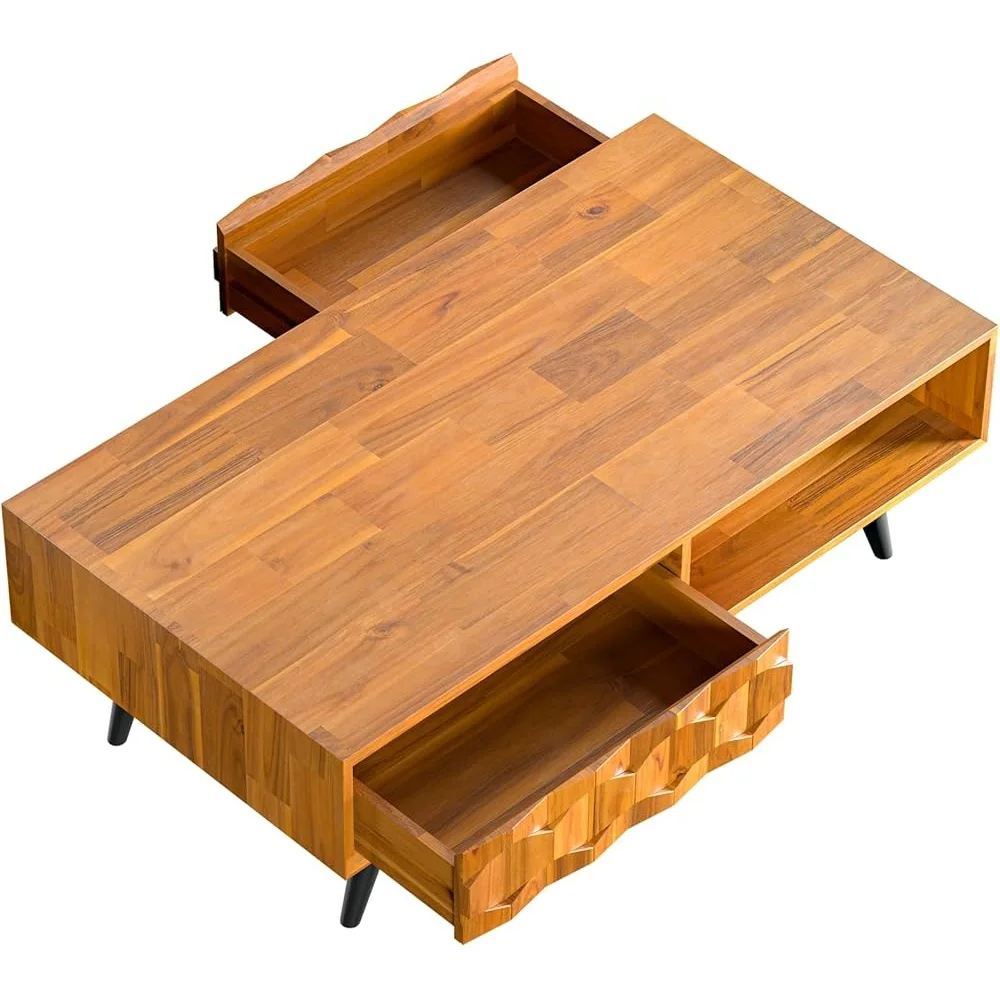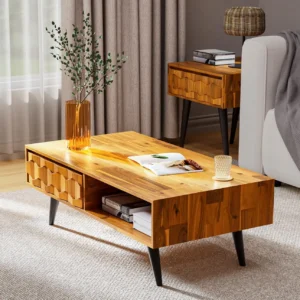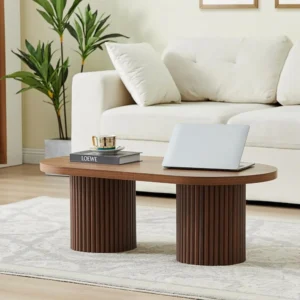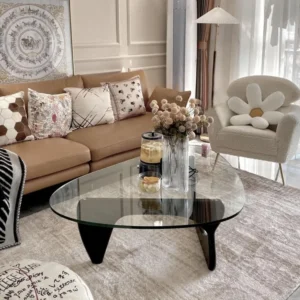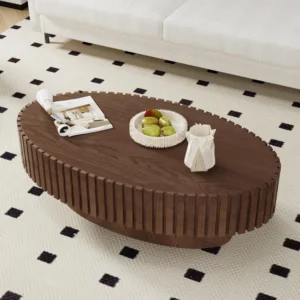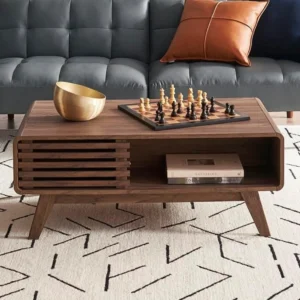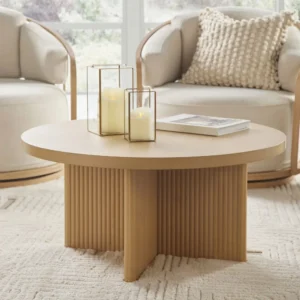The Exceptional Value of Authentic Teak: Why It Stands Apart
Teak wood has earned its prestigious reputation in the world of fine furniture for good reasons. This remarkable hardwood stands as one of nature’s most exceptional materials, prized by furniture makers and collectors alike. While many woods offer beauty, few can match teak’s extraordinary combination of stunning appearance and remarkable durability.
What truly sets authentic teak apart is its impressive longevity. Quality teak furniture isn’t just a purchase—it’s a generational investment that can easily last 50+ years with minimal care. This remarkable wood naturally contains oils and rubber compounds that make it uniquely resistant to:
- Water damage and warping
- Insect infestations including termites
- Fungal decay and rot
- UV damage from sun exposure
- Temperature fluctuations
Beyond durability, teak captivates with its warm honey-golden tones that develop a sophisticated silver-gray patina over time when left outdoors. This natural aging process creates furniture that grows more beautiful with passing years.
As demand for teak has increased, so too has the market for imitations and lower-quality alternatives. This makes understanding how to identify genuine teak essential for anyone considering an investment in intelligent black mid-century coffee tables or other premium furniture pieces.
Historically, teak’s exceptional properties made it the premier choice for shipbuilding, where its natural oils protected vessels from the harsh marine environment. Today, these same qualities make authentic teak pieces from mid-century modern teak coffee tables collections particularly valuable in home settings, where they provide both beauty and function for decades.
Visual Identification: The Telltale Appearance of Genuine Teak
The first step in identifying authentic teak begins with careful visual examination. Genuine teak displays a distinctive color spectrum ranging from golden-brown to rich honey hues when freshly cut or sanded. This coloration isn’t uniform throughout the tree, however, which explains natural variations you’ll observe in quality furniture.
Heartwood—the dense inner portion of the trunk—shows the most prized coloration and highest oil content. This premium section displays that characteristic golden-honey tone that teak lovers cherish. Sapwood—the outer layers closer to the bark—appears lighter in color and contains fewer oils. Quality manufacturers typically use primarily heartwood for visible surfaces while reserving sapwood for internal structure.
When examining authentic teak grain patterns, look for:
- Straight, tight grain patterns (though some gentle waves may appear)
- Consistent texture with a somewhat coarse feel
- Occasional natural variations that follow logical patterns
- Minimal knots, particularly in Grade A teak
One of teak’s most fascinating characteristics is how it ages. When exposed to outdoor elements, genuine teak gradually develops a distinguished silvery-gray patina. This weathering process happens naturally over months of sun exposure and represents the wood’s protective response to ultraviolet light. This patina doesn’t indicate deterioration—beneath it, the wood remains structurally sound due to its natural oils.
Be wary of furniture with inconsistent coloration, excessive knots, or unnaturally even color, as these may indicate lower-quality wood or artificial staining meant to mimic teak’s appearance. Some manufacturers stain cheaper woods like acacia to approximate teak’s color, but these lack the natural variations and depth of genuine teak.
The Touch Test: Tactile Qualities of Authentic Teak
While visual assessment provides important clues, the way teak feels offers equally valuable information about its authenticity. Genuine teak possesses a unique tactile signature that’s difficult to replicate in substitute materials.
When you run your hand across unfinished or lightly finished teak, you’ll notice a distinctly smooth, almost waxy sensation. This comes from the wood’s naturally high oil content—primarily a substance called tectoquinone—which gives teak its legendary water resistance. These oils aren’t a surface treatment; they exist naturally throughout the wood and persist for the furniture’s lifetime.
To perform a simple touch test:
- Find an inconspicuous, unfinished area of the furniture (perhaps underneath or on the back)
- Run your fingertips across the surface with light pressure
- Genuine teak will feel slightly oily or waxy, not completely dry
- The surface should feel dense and smooth despite its visible grain
The natural oils in teak’s distinctive grain provide more than just a pleasant feel—they’re functional components that actively repel water and resist insect damage. This oil content represents one of teak’s most valuable assets and explains why quality teak furniture requires minimal maintenance compared to other woods.
Another telling characteristic is teak’s weight. Authentic teak has a high density that makes it noticeably heavier than many lookalike woods. When you lift a teak piece, it should feel surprisingly substantial for its size. This weight comes from the wood’s tight grain structure and high oil content, which contribute directly to its strength and durability.
Lighter-weight “teak” furniture often contains cheaper substitutes or young plantation-grown wood with lower density and oil content. These alternatives won’t deliver the same longevity or performance as mature, genuine teak.
The Aroma and Water Tests: Simple Verification Methods
Beyond visual and tactile assessment, two simple tests can help confirm teak’s authenticity: the aroma test and the water test.
Genuine teak possesses a distinctive natural scent that many describe as pleasant and somewhat leathery. This unique aroma comes from the same natural oils that give teak its remarkable durability. To detect this scent:
- Find an unfinished area of the wood, ideally in a less visible spot
- Gently rub the surface with your thumb to warm the oils
- Bring your nose close and inhale
- Authentic teak will release a subtle, sweet, leathery aroma
The water test provides another reliable verification method by demonstrating teak’s natural water resistance. This simple procedure showcases the wood’s high oil content in action:
- Place a small drop of water on an inconspicuous, horizontal surface of the wood
- Observe how the water interacts with the surface
- On genuine teak, water will bead up rather than immediately absorbing
- These beads may remain visible for several minutes before slowly absorbing
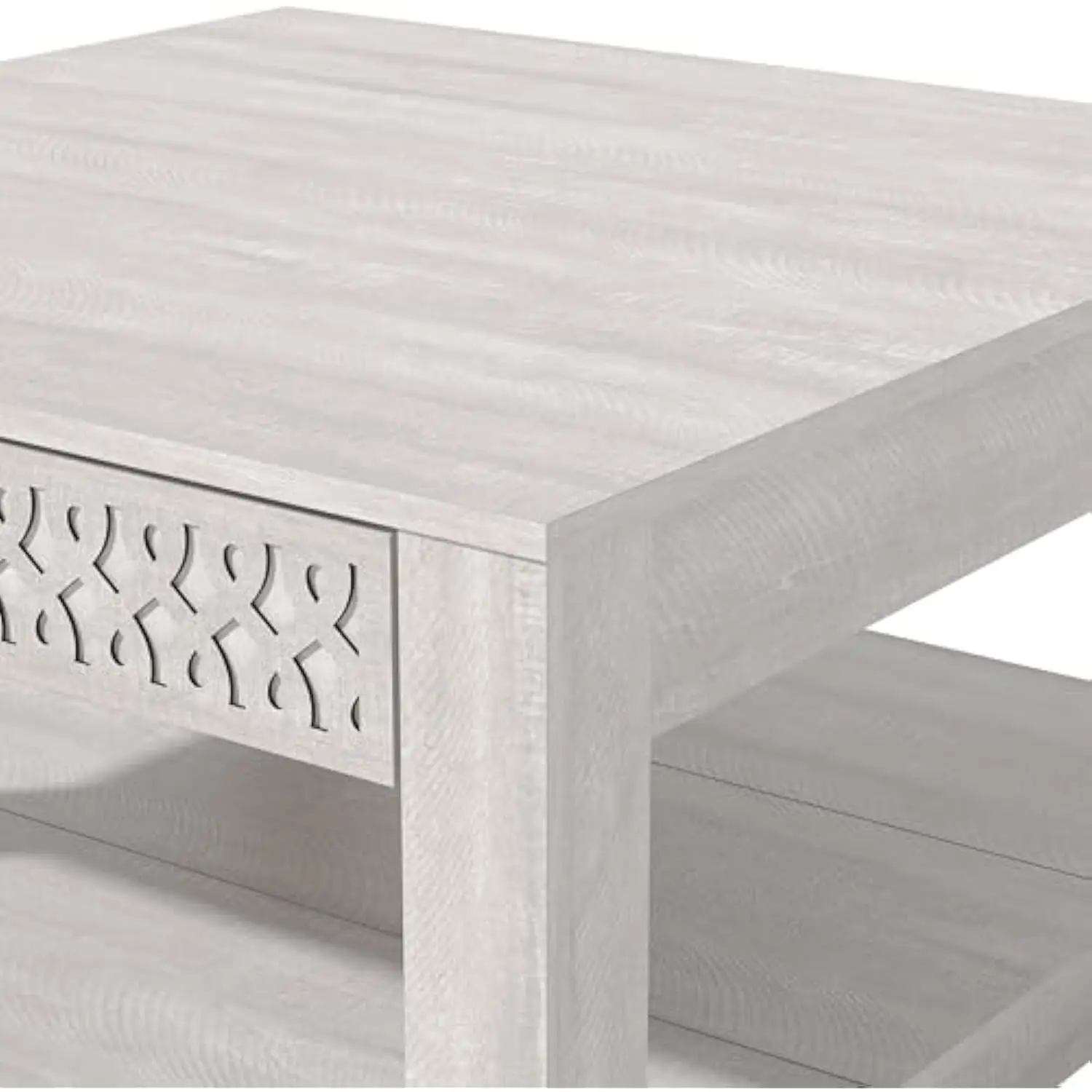
This water-resistant quality explains why teak has historically excelled in marine environments and outdoor furniture. Woods lacking natural oils will quickly absorb water droplets, leading to potential swelling, warping, and decay over time.
Note that heavily finished surfaces may show different results regardless of the underlying wood, as the finish itself can create a water barrier. For the most accurate results, perform these tests on unfinished areas whenever possible.
Understanding Teak Grades: Premium vs. Commercial Quality
Not all authentic teak is created equal. The wood is typically categorized into three distinct grades—A, B, and C—each representing different quality levels based on the wood’s source within the tree and its age at harvest.
| Grade | Source | Characteristics | Best Uses | Relative Price |
|---|---|---|---|---|
| A | Heartwood from mature trees (25+ years) | Uniform golden-brown color, high oil content, minimal knots, tight grain | Premium outdoor furniture, boat building, luxury items | Highest |
| B | Mix of heartwood/sapwood from semi-mature trees | Some color variation, moderate oil content, occasional knots | Indoor furniture, less exposed outdoor pieces | Medium |
| C | Primarily sapwood or young plantation teak | Lighter color, lower oil content, more knots and inconsistencies | Indoor use, components, budget furniture | Lowest |
Grade A teak comes exclusively from the heartwood of mature teak trees, typically at least 25 years old. This premium section contains the highest concentration of natural oils, which accounts for its superior durability and water resistance. The coloration appears uniform, with minimal knots and a tight, consistent grain pattern. This grade represents the gold standard for outdoor applications where maximum durability is required.
Grade B teak includes a mixture of heartwood and sapwood from somewhat younger trees. While still durable, it contains fewer natural oils and may show more color variation and occasional knots. This grade performs well for indoor furniture and less-exposed outdoor applications but may require more maintenance over time.
Grade C teak primarily consists of sapwood and wood from young plantation trees. With significantly lower oil content and more knots, this grade lacks the superior durability of higher grades. While technically still “real teak,” Grade C serves better for indoor components or budget-conscious projects where maximum longevity isn’t essential.
Understanding these distinctions helps explain the wide price variation in solid wood coffee tables and other teak furniture. Premium Grade A teak commands significantly higher prices but delivers substantially longer service life, particularly in challenging environments.
Craftsmanship Inspection: Construction Details That Reveal Quality
The quality of teak is only half the story—equally important is how that wood is crafted into furniture. Superior construction techniques complement teak’s natural properties to create pieces that truly last generations.
When evaluating teak furniture craftsmanship, pay particular attention to joinery—how the various components connect. Quality teak furniture typically features traditional woodworking joints that maintain structural integrity despite seasonal wood movement. Look for:
- Mortise-and-tenon joints, where one piece fits into a precisely cut pocket in another
- Dovetail joints, recognized by their interlocking “tails” and “pins” pattern
- Finger joints that create large surface areas for strong adhesion
- Reinforcing dowels made from hardwood rather than softwood
Quality vintage furniture craftsmanship will also feature appropriate hardware. Authentic teak pieces typically use brass or stainless steel fasteners rather than regular steel or aluminum, as these materials resist corrosion and complement teak’s longevity. Screws should be deeply countersunk and sometimes concealed with teak plugs cut from the same piece to maintain grain continuity.
The finishing approach also reveals much about quality. Genuine teak furniture often features minimal finishing—perhaps just light sanding and a thin oil application—rather than heavy lacquers or varnishes. This approach allows the wood to breathe and naturally release oils while developing its characteristic patina over time.
When examining construction, test the furniture’s stability by applying gentle pressure from different angles. Quality pieces will feel solid without creaking or excessive movement. Check that drawers slide smoothly on proper wooden guides rather than cheap plastic runners, and that all moving parts operate with precision.
Finally, assess proportions and material thickness. Quality teak furniture uses appropriately thick stock for structural elements, not thin pieces that sacrifice durability for lower material costs. The overall proportions should reflect thoughtful design rather than material conservation.
Price Analysis: What Genuine Teak Should Cost
The old adage “you get what you pay for” particularly applies to teak furniture. Understanding reasonable price expectations helps identify potential frauds and recognize fair value for authentic pieces.
Genuine teak commands premium prices for several compelling reasons:
* Limited sustainable supply compared to fast-growing alternatives
* Long growth cycle (25+ years for premium teak)
* Exceptional durability translating to decades of use
* Natural resistance to elements eliminating costly replacements
* Growing global demand as awareness of quality increases
While prices vary by design complexity, size, and grade, authentic teak furniture typically costs significantly more than similar pieces made from other hardwoods. For example, where an oak coffee table might cost $400-600, a comparable teak version could easily range from $800-1,500 or more.

When evaluating prices, consider the long-term value proposition. Quality teak pieces often remain functional for 50+ years with minimal maintenance, while lower-quality furniture might require replacement every 5-10 years. This longevity makes authentic teak an investment rather than merely a purchase.
Be particularly wary of “bargain” teak. While occasional sales do occur, consistently below-market pricing often indicates one of several issues:
* The wood is actually a less expensive substitute stained to resemble teak
* The piece uses Grade C teak or primarily sapwood
* The furniture contains only a thin teak veneer over cheaper core materials
* Construction quality has been sacrificed to meet price points
Understanding the features of quality coffee tables helps you recognize where value truly exists in premium furniture. The investment in authentic teak pays dividends through decades of trouble-free use and enduring beauty.
Seller Reputation: Finding Trustworthy Teak Sources
In the quest for authentic teak furniture, the reputation of your chosen seller proves nearly as important as your own identification skills. Reputable sellers transparently provide critical information about their products and stand behind their quality claims.
When evaluating potential teak furniture sources:
- Research company history and customer reviews spanning several years
- Look for detailed product descriptions specifying teak grade and source
- Seek sellers who freely discuss their sourcing and manufacturing practices
- Verify whether the company specializes in quality hardwoods or sells primarily low-cost items
- Check warranty terms—quality teak typically includes substantial coverage
Questions to ask potential sellers include:
* What specific grade of teak is used in this piece?
* Is the furniture made entirely of solid teak or are veneers used in some areas?
* What joinery methods are employed in construction?
* How is the wood finished and what maintenance is recommended?
* Where was the teak sourced and is documentation available?
Truly knowledgeable sellers will answer these questions confidently and completely. Hesitation or vague responses may indicate limited expertise or misrepresentation. Companies specializing in vintage coffee tables and premium furniture typically provide the most reliable information about their materials.
Mid-Century Modern Solid Wood Coffee Tables, Mid-Century Modern Teak Coffee Tables
$879.95 Select options This product has multiple variants. The options may be chosen on the product pageMid-Century Modern Danish Coffee Tables, Mid-Century Modern Oval Coffee Tables, Mid-Century Modern Solid Wood Coffee Tables
$390.05 Select options This product has multiple variants. The options may be chosen on the product pageMid-Century Modern Glass Top Coffee Tables, Mid-Century Modern Vintage Coffee Tables, Mid-Century Modern Vintage Side & End Tables
$725.36 Select options This product has multiple variants. The options may be chosen on the product pageMid-Century Modern Oval Coffee Tables, Mid-Century Modern Solid Wood Coffee Tables
$679.56 Select options This product has multiple variants. The options may be chosen on the product pageMid-Century Modern Solid Wood Coffee Tables, Mid-Century Modern Walnut Coffee Tables
$501.53 Select options This product has multiple variants. The options may be chosen on the product pageMid-Century Modern Round Coffee Tables, Mid-Century Modern Solid Wood Coffee Tables
Price range: $522.31 through $559.78 Select options This product has multiple variants. The options may be chosen on the product page
Transparency regarding sourcing has become increasingly important as consumers grow more environmentally conscious. Reputable sellers will explain whether their teak comes from plantations, reclaimed sources, or managed forests, helping you make not just a quality assessment but an ethical one as well.
Identifying Common Imitations: Woods That Pose as Teak
As teak’s popularity has grown, so too has the market for less expensive woods marketed as “teak alternatives” or sometimes misleadingly sold as actual teak. Learning to identify these common substitutes helps protect your investment.
Nyatoh, sometimes called “Philippine mahogany,” offers a somewhat similar appearance to teak but lacks its natural oils and density. While attractive, nyatoh requires regular sealing and maintenance to prevent moisture damage, and it won’t develop teak’s silver patina naturally. It feels noticeably lighter than genuine teak and absorbs water more readily.
Acacia has become perhaps the most common teak substitute due to its availability and lower cost. While it can be quite attractive with rich grain patterns, acacia typically contains more knots than teak and doesn’t resist water or insects naturally. Its lighter weight and tendency to expand and contract with humidity changes distinguish it from genuine teak.
Eucalyptus offers decent weather resistance at a much lower price point, making it popular for outdoor furniture marketed as teak alternatives. However, it lacks teak’s natural oils, requiring regular sealing to maintain water resistance. Its distinctive scent differs noticeably from teak’s subtle aroma.
Shorea (sometimes sold as “Yellow Balau”) comes closest to mimicking teak’s properties, with good natural oils and weather resistance. However, it typically shows a redder hue than teak’s golden tones and doesn’t develop the same silver patina. The grain often appears more dramatic and less uniform than teak’s characteristic pattern.
These alternatives have legitimate uses and can make attractive, functional furniture when properly identified and maintained. However, they should be sold and priced honestly rather than masquerading as genuine teak. Understanding the enduring allure of iconic teak tables helps buyers recognize why these distinctions matter beyond mere aesthetics.
Sustainable Sourcing: Environmental Considerations for Teak Purchases
The environmental impact of teak harvesting deserves careful consideration when making purchasing decisions. Historically, much teak came from old-growth forests in Southeast Asia, leading to significant environmental concerns about deforestation and habitat loss.
Today, environmentally conscious consumers have several more sustainable options:
Plantation-grown teak offers a renewable source that reduces pressure on natural forests. This teak grows in carefully managed plantations, primarily in Central America and Indonesia. While plantation teak sometimes contains less oil than old-growth wood (due to younger harvest age), quality plantations produce excellent material by allowing trees adequate maturation time.
Forest Stewardship Council (FSC) certification indicates teak harvested according to strict sustainability standards that protect ecosystems and local communities. This independent certification provides assurance that your furniture hasn’t contributed to illegal logging or deforestation.
Reclaimed teak represents perhaps the most environmentally friendly option. This wood comes from dismantled structures, decommissioned boats, or salvaged sources, giving new life to existing materials without additional harvesting. Reclaimed teak often displays distinctive character from its previous use while maintaining teak’s legendary durability.
When considering finishes that complement teak grain, remember that sustainable choices extend beyond the wood itself to the treatments applied. Water-based and natural oil finishes generally create less environmental impact than solvent-heavy alternatives.
While sustainably sourced teak may sometimes cost more initially, this price reflects the true environmental cost of responsible production. By choosing certified sustainable or reclaimed teak, you ensure your beautiful furniture doesn’t come at an unseen environmental price.
Essential Care: Maintaining Your Authentic Teak Investment
One of teak’s most appealing characteristics is its minimal maintenance requirements compared to other furniture woods. However, understanding basic care principles helps preserve your investment for decades to come.
Teak naturally contains oils that protect it from the elements, but these oils gradually deplete over time, particularly when exposed to sun and rain. This natural aging process creates teak’s famous silver-gray patina—a look many owners find increasingly beautiful over time.
For basic cleaning:
1. Use a soft brush to remove dust and debris
2. Clean with mild soap and water when necessary
3. Allow to dry completely before applying any treatments
4. Avoid pressure washing, which can damage the wood surface
Owners have two primary maintenance approaches:
Natural Patina Approach: Many teak enthusiasts prefer allowing the wood to naturally weather to a sophisticated silver-gray. This low-maintenance approach requires only occasional cleaning with mild soap and water. The patina actually protects the wood while creating a distinctive appearance that many designers prefer.
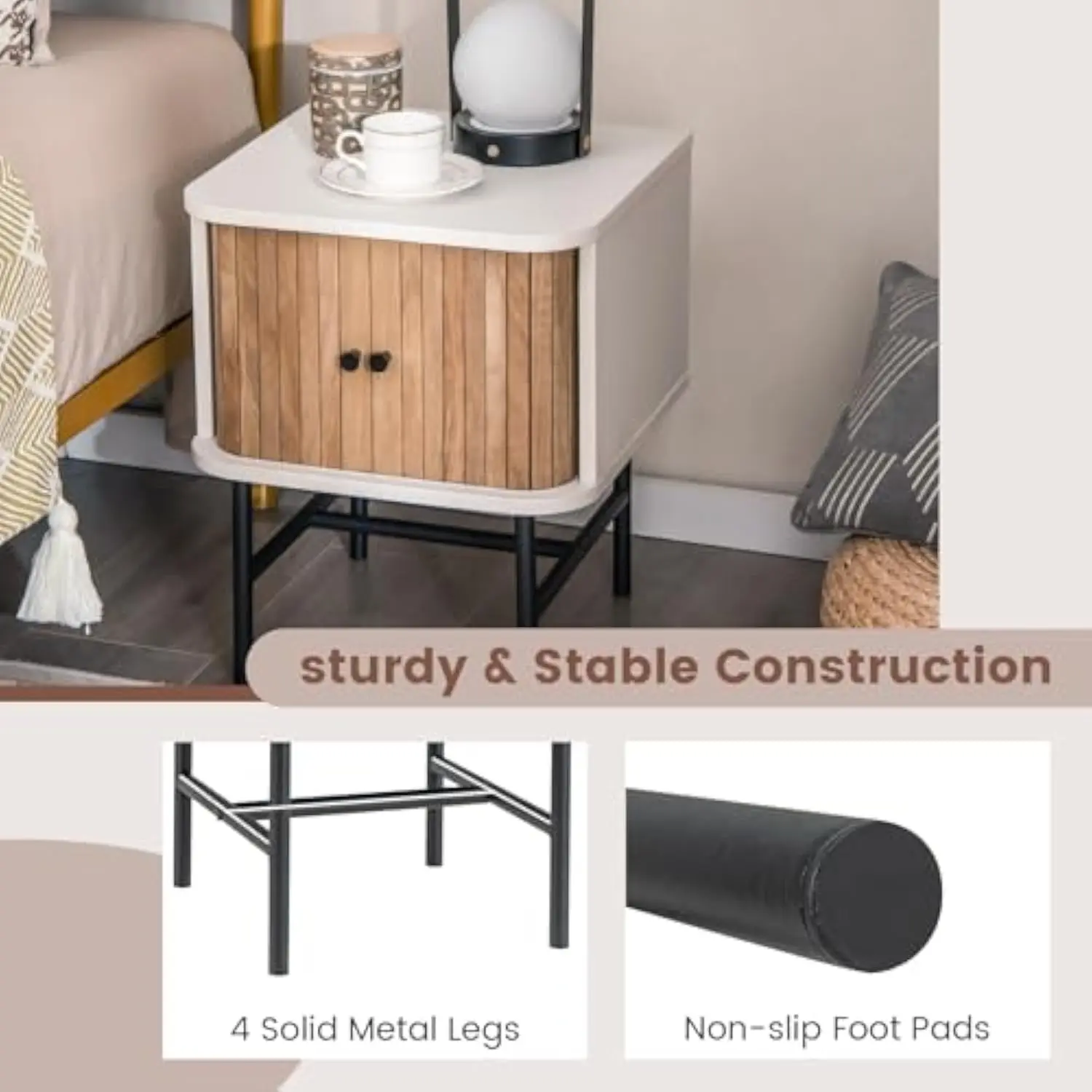
Golden Color Preservation: To maintain teak’s original honey tones, periodic application of teak oil or sealer becomes necessary. Apply teak-specific products every 3-6 months outdoors or annually indoors. Begin with thoroughly cleaned, dry wood, and apply according to product instructions.
Avoid common care mistakes including:
* Using household vegetable oils, which can promote mildew growth
* Applying polyurethane or lacquer, which prevent natural breathing
* Sanding excessively, which removes precious natural oils
* Using harsh chemical cleaners that strip protective compounds
With minimal attention, quality teak furniture will continue performing beautifully for generations, making it one of the most forgiving and rewarding materials for long-term furniture investment.
Making the Final Assessment: Is It Authentic Teak?
Armed with comprehensive identification knowledge, you can now confidently assess whether that beautiful piece truly represents authentic teak. Let’s consolidate what we’ve learned into a practical final checklist:
Visual Assessment
– Does it display a warm golden-brown to honey color?
– Is the grain straight and relatively tight with minimal knots?
– Do color variations follow natural patterns rather than appearing artificially uniform?
Tactile Evaluation
– Does it feel dense and heavy for its size?
– Does unfinished wood feel slightly oily or waxy to the touch?
– Does the surface feel smooth despite visible grain?
Practical Tests
– Does water bead on the surface rather than immediately absorbing?
– Does it release a subtle, sweet leathery aroma when warmed?
– Do these characteristics appear consistent throughout visible wood?
Construction Quality
– Are joints tight, precise and use traditional woodworking methods?
– Is hardware corrosion-resistant (brass or stainless steel)?
– Does the piece feel solid and stable under light pressure?
Seller Verification
– Does the seller provide specific details about teak grade and source?
– Are they knowledgeable about construction methods and materials?
– Does the price align with expectations for genuine teak quality?
Remember that while a single characteristic might be mimicked, the complete combination of teak’s properties proves much harder to fake. Trust your observations across multiple assessment categories rather than focusing exclusively on any single factor.
For visual learners, studying unique teak grain patterns can further develop your identification skills. With practice, spotting authentic teak becomes increasingly intuitive.
The effort to identify genuine teak rewards you with furniture that truly delivers on its promises—extraordinary durability, minimal maintenance, and a timeless beauty that evolves gracefully through decades of use. When you invest in authentic teak, you’re not just purchasing furniture; you’re acquiring a legacy piece designed to serve generations.
At Hearth Forms, we believe in the enduring value of authentic materials and craftsmanship that stands the test of time—qualities perfectly embodied in genuine teak furniture.

